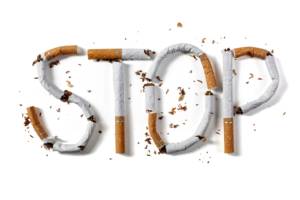The third week of January is designated National Non-Smoking Week in Canada. The Canadian Council for Tobacco Control coordinates the efforts. The agency asks everyone to have a Weedless Wednesday by giving up all smoking on this day. The entire week is dedicated to the conversation about smoking and its impact on your health.
Common Concerns When Trying to Stop Smoking
You know the reasons to quit smoking: It’s better for your health, the air and the people around you. However, it’s not easy to stop smoking after years of relying on cigarettes. Too, there are many fears about how you will adapt to life without smoking. Many people are concerned about weight gain and withdrawal. However, by working with cessation experts, you can minimize your concerns and prevent weight gain. There has been a lot of research dedicated to the cessation of smoking and its impacts on your life. One key finding is that stopping smoking is better for your overall health than gaining a few pounds or going through withdrawal.
Benefits of Quitting
It takes two hours for your blood pressure and heart rate to return to normal after smoking a cigarette. Blood circulation also improves in this time frame. Imagine if you gave up half of the cigarettes you smoked each day. Your body would have more normal vitals that much longer. After 12 hours without a smoke, the carbon monoxide in your blood decreases to normal levels and the amount of oxygen in your blood to increases to normal levels.
In just one day without a cigarette, your risk of having a heart attack or developing coronary artery disease declines. You still have to watch your health, but you’re taking major steps toward increasing your lifespan. In two days, your ability to taste and smell improves because nerve endings are able to regenerate. It takes three days for the nicotine to be out of your system. This is when the biggest onset of withdrawal symptoms occurs. You’ve saved money for the past three days by not smoking, so do something for yourself. Get a massage, go out to the range or buy something nice for yourself as a reward.
In the next two to three weeks, you’ll be feeling much better and able to get back to exercise and do physical things without getting winded. The withdrawal symptoms should begin to subside by this time. You’ll be able to breathe easier and enjoy more of life’s fun. After four weeks, the cilia in your lungs are repaired to the point of being able to help you fight off lung infections and respiratory issues. This helps your lungs repair. The longer you go without smoking, the less withdrawal symptoms you’ll experience. After one year without smoking, your risk of heart disease is reduced by half of what it was when you were smoking.
Set Goals
Once you’ve decided to stop smoking, set goals. Make sure these goals are manageable and measurable. Instead of trying to give up smoking for one year, take it one week at a time. Just for seven days you’re going to stop or at least reduce the number of cigarettes you smoke.
Use the intervention programs that are available to you. Through the Council for Tobacco Control, you have access to helplines, telephone counseling, therapy and community-based programs. Your healthcare provider can even provide interventions to assist you through the withdrawal symptoms. It’s up to you to ask for help. Gain the support of your family. Talk about your fears and expectations. Make a commitment to your health by giving up cigarettes. Take up a new hobby to replace the time you spent smoking. Do it for yourself and your loved ones who want you around for years to come.



